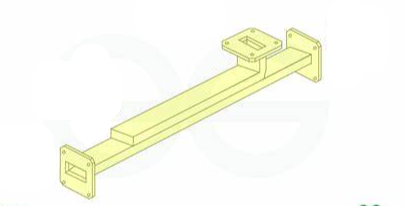The Role of Directional Couplers in Microwave and RF Engineering
Directional couplers play a pivotal role in microwave and RF engineering, where their ability to manage high-frequency signals with precision and minimal disruption makes them foundational components. In these domains—spanning radar, wireless comms, and test systems—they’re the unsung heroes behind signal control, measurement, and optimization. Here’s how they shine, grounded in their practical utility.
Core Roles in Microwave and RF Engineering
Signal Sampling for Measurement
Why It Matters: Microwave and RF systems (e.g., 1 GHz to 100 GHz) demand real-time insight into signal power and quality without breaking the circuit.
How It Works: A coupler (say, 10 dB) diverts a fraction of the forward signal to a detector or analyzer, leaving the main path intact.
Example: In a 5G base station, engineers monitor transmitter output to avoid overdriving amplifiers, using a microstrip coupler on a PCB.
Power Division and Distribution
Why It Matters: Splitting power evenly or selectively is key for multi-component systems like antenna arrays or mixers.
How It Works: A 3 dB hybrid coupler splits power equally (50/50) with a 90° or 180° phase shift, while a 20 dB unit might send 99% one way, 1% another.
Example: Phased-array radar uses branch-line couplers to feed multiple antenna elements, steering beams electronically.
Isolation and Directionality
Why It Matters: High-frequency signals reflect easily, and you don’t want interference between ports.
How It Works: Couplers offer 20-40 dB isolation, ensuring the forward signal doesn’t bleed into the coupled port (or vice versa).
Example: In a satellite uplink, a waveguide coupler isolates the transmitter from receiver signals, preventing crosstalk.
Impedance Matching and Tuning
Why It Matters: Reflections kill efficiency in RF systems (VSWR woes).
How It Works: By sampling reflected power via the reverse port, couplers feed data to automatic tuning circuits or manual adjustments.
Example: A microwave amplifier uses a coupled-line coupler to tweak its load, maximizing power transfer.
Mixing and Beamforming
Why It Matters: Modern RF (e.g., 5G, Wi-Fi 6) relies on precise signal phasing for directional transmission.
How It Works: Quadrature hybrids provide 90° phase shifts, enabling balanced mixers or beamforming arrays.
Example: In a MIMO antenna, couplers split and phase signals to focus energy toward a user device.
Technical Edge in Microwave/RF
Frequency Fit: Couplers scale from RF (below 1 GHz) to millimeter waves (30-300 GHz), with waveguide types handling high power and microstrip fitting compact designs.
Low Loss: Unlike resistive dividers, they preserve signal strength—crucial when every dB counts in microwave links.
Bandwidth: Coupled-line or stripline designs can span octaves (e.g., 2-18 GHz), suiting broadband applications like spectrum monitoring.
Real-World Context
In microwave engineering, waveguide couplers dominate high-power apps (radar, satellite) due to their robustness—think kilowatts without breaking a sweat. Meanwhile, RF leans on stripline or coaxial couplers for cost and integration, like in IoT or car radar. The establishment might push fancy wideband hybrids as the future, but a basic 3 dB branch-line still rules for narrowband, budget-conscious designs. Don’t sleep on the classics.

Email us
Warning: Undefined variable $pronamepx in D:\wwwroot\www.resistorsupplies.com\moban\en_inc\ziliao.php on line 67
Fatal error: Uncaught TypeError: count(): Argument #1 ($value) must be of type Countable|array, null given in D:\wwwroot\www.resistorsupplies.com\moban\en_inc\ziliao.php:67 Stack trace: #0 D:\wwwroot\www.resistorsupplies.com\ziliao.php(146): include() #1 {main} thrown in D:\wwwroot\www.resistorsupplies.com\moban\en_inc\ziliao.php on line 67
